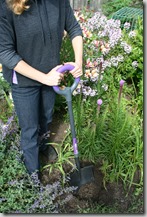
2012 was a great year for gardening in many ways – the sustainability movement made for some beautiful, fresh ideas (like the insect habitat art introduced by Flora Grubb) and the continuation of the less-lawn movement gave designers an excuse to go bold with the front yard, skipping the usual lawn-with-foundation-plantings in favor of water features, semi-enclosed patios, and wildlife-friendly plantings. Love it! Of course, there were some parts of the year I’d just as soon forget.
Without further ado, here’s my take on the best and worst of 2012.
Garden trends:
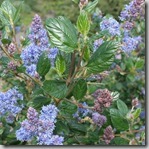 |
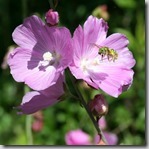 |
 |
 |
Best: I loved seeing the popularity of native plants, and how so many of my fellow designer pals this year were gushing over newly-discovered natives that work beautifully in the landscape. Usually we’re all about the weird new foliage aberrations, like all those silly Heucheras Terra Nova keeps spitting out (do we not have enough funny-colored Heucheras yet? Really, we need more?).
So it’s been such a refreshing change to be gossiping about our latest score at the native plant sale or the differences between our local native grasses. It just feels more real somehow, like as an industry we’re getting back to something deeply important that feeds our souls and gives back to the world. Breeders may enjoy the challenge of creating ever-weirder plants, but I’m glad to see designers giving that a collective eye-roll and getting back to the basics of good design, regional sensibilities, and a connection to our natural world. Those things never go out of style.
Worst: More and more organic pesticides coming out. So, I’m torn on this one. I’m glad people are reaching towards a healthier way of life, and are thinking about the effects of pesticides, both for our own health and for the health of our gardens (earthworms, honeybees, soil microbes, and frogs are all integral parts of a healthy garden that are harmed by the most common pesticides).
Yet the solution isn’t found in spraying something that is less harmful or derived from nature, much as that’s a good start. Pest problems in ornamental plants are caused by poor plant choices or underlying issues in the health of the landscape, so solving those issues is a much more direct way of dealing with pest problems than is spraying something. I think most gardeners “get” this, but it’s easy to use these products as a crutch. A philosophy of treating the symptom (with spray) rather than the cause (with compost or a new type of plant) is also a lot more profitable for manufacturers, so I doubt we’ll see an end to this trend anytime soon.
Colors:
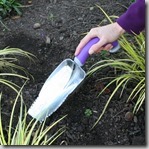 |
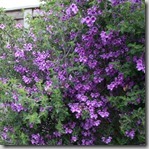 |
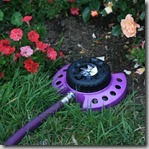 |
 |
Best: Purple! In every shade! On garden tools, in flowers and foliage, in décor items and cushions and everywhere, purple! I think I bought a lifetime supply of sheets, towels, garden tools, shirts, sweaters and even purple pants this year. While I don’t see a ton of purple on the horizon for 2013, it’s certainly not out of style. I think people are realizing that shades of purple can add a fun pop of color to nearly any style of landscape or home décor, and so unlike some trendy colors which are never seen again after their surge of popularity, purple seems like it may be sticking around for a while. Thank goodness.
Worst: Tangerine Tango, 2012’s color of the year. I admit an initial rush of enthusiasm for a color that is so bright and vivid in the garden. But that particular shade is just a hair too obvious, too glaring. While I’ve seen it used successfully in very small doses (like on cushions, or décor accents), the color seems to scream out – “look at me!, look at me!” – it feels self-consciously gaudy wherever in the garden it’s placed. Give me a gentler shade of orange, one which plays well with its neighbors and will look perfectly in harmony for years to come. Tangerine Tango was such a strong statement that it felt almost instantly dated, and I’m glad to move on.
Books:
 |
 |
 |
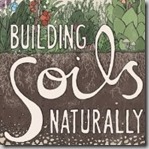 |
Best: The Sunset Western Garden Book – need I say more? With most encyclopedias and reference books, I figure I don’t need to get every single updated version, since the differences will be minimal. However, if you’re gardening in the West, The Sunset book is THE book, and this latest edition has a major upgrade in the form of actual photographs of the plants covered (finally!) as well as expanded plant lists that cover some of the modern movements like using edibles in the ornamental garden or attracting beneficial insects. And their “how to garden” sections in the back have some seriously inspiring shots of succulents, native plants, and herbs used within the landscape. Definitely worth the upgrade.
Runners-up for best book include Niki Jabbour’s The Year-Round Vegetable Gardener, Marty Wingate’s Landscaping for Privacy, and Jessi Bloom’s Free-Range Chicken Gardens.
Picks for new gardeners include Amanda Thomsen’s crazy-cool choose-your-own-adventure gardening book Kiss My Aster – fully illustrated, wickedly funny, and gives clear design and how-to advice for gardeners wanting to get started. Katie Elzer-Peters’ book The Beginner’s Illustrated Guide to Gardening is the more straightforward version of the same, with super-clear photos and text that you’ll refer back to for years.
A geekier pick is Phil Nauta’s excellent book Building Soils Naturally, which has everything you will ever wonder or need to know about building a healthy organic soil with the perfect balance of nutrients for growing any type of plant. It’s not for everyone (how many people do you know who want to read an entire inch-thick book on soils?), but if you’re interested in the topic, Phil’s your man. A friendly, depthy read for organic gardeners.
California Native Gardening by Helen Popper is another geeky fave. It’s a gentle read taking you through all of the cycles and seasons in a native plant garden. I was initially disappointed in this peaceful little volume, since I was expecting a quick reference manual, but as I read I became enchanted with the author’s understanding of the natural cycles of our native plants in the garden, and have picked it up just for fun on numerous occasions.
Worst: Instead of picking on any one book, I’ll just say that 2012 has been a disappointing year in garden publishing for me. Though there have been some real gems as evidenced above, I’ve noticed a disturbing trend among the masses: The photos have stunk.
While it’s shameful to admit this as a writer, for me the initial draw when picking up any gardening book is the photos. I see an innovative idea portrayed in a picture, and I feel drawn to read the author’s text explaining how that concept can be used to its best advantage. Even better is when there is a sense of continuity in the photos, which happens when a single photographer works with the author to create photos just for the book, or in rarer cases when the author is involved and insightful enough to select photos that all have a similar feel.
Some excellent examples of successful books in this regard are Jessi Bloom’s Free-Range Chicken Gardens and Fern Richardson’s Small-Space Container Gardens. However, shrinking budgets seem to be taking their toll on garden book publishing, and most of the books I’ve gotten this year have had a terrible hodge-podge of poorly-cropped plant close-ups that merely decorate the book, rather than properly illustrating its concepts.
And on most of the books, the photos haven’t held together as a unified whole. Instead, the photos have felt like a mixed-up assortment of whatever the harried author could beg from friends or bloggers on a severely limited budget. I think if we look at our shelves of classic, well-beloved gardening books, we’ll see a common thread that those books that stand the test of time all have effective photography.
I sincerely hope 2013 will see an end to this disrespectful treatment of garden photography, because there’s nothing I love better than to spend copious quantities of money snapping up books that are as beautifully-photographed as they are carefully-written.
Tools:
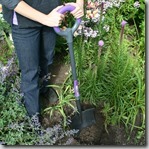 |
 |
 |
 |
Best: Oh man, where to start? First, I gotta give a shout-out to Radius Garden for making purple (PURPLE) gardening tools. All of their amazing spades, shovels, digging forks, etc. come in purple now! I am collecting a whole set and letting my employees use my (still perfectly attractive and wonderfully ergonomic) lime-colored ones.
Next, this 12.5” Professional Pruning Saw with the optional-but-much-beloved leather scabbard made my other half into a pruning enthusiast. It’s perfectly balanced, has a curved blade that cuts into wood with little effort, and both of us, with our respective small and extra-large hands, felt as though the handle was made just for us. If you have any tree-pruning ahead of you this winter, definitely consider a saw upgrade. This sucker even cut through dense, dead juniper wood with ease.
Saving the best for last, the Professional Gardener’s Digging Tool from Garrett Wade is my new favorite hori-hori. The rounded handle is much more comfy than the rectangular handles of the Japanese kinds, and the offset blade gives you a boost in leverage that makes getting the job done that much easier. After lending it out to my landscaping foreman to get his thoughts, I was only able to get it back after promising to buy new ones for the crew (the first one was mine, dammit!). It’s $60, but if you’re a pro or you just garden a lot, you’ll find it’s definitely worth the cash.
Worst: GrowTech hori hori. This cheap wannabe soil knife masquerades as a fine, stainless steel hori hori. Yet in less than a year, the three I purchased for my employees all rusted, and one actually broke. I have never broken the metal blade on a hori hori before, and my employee said that he wasn’t even doing anything weird with it, just going after a deep taproot. Cheap, cheap, cheap. Though these are sold by a few different companies, you can tell it’s the shoddy GrowTech one because of the way the metal is bent into the handle – it even looks poorly-made.
If you like this style of hori hori, go for the Joshua Roth or Nisaku stainless steel one (Joshua Roth and Nisaku are identical except for the name stamped on the blade). They never rust and last forever.
Most popular articles here at North Coast Gardening:
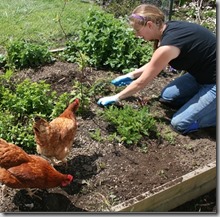 This was the year of the rant – my top three articles of the year all involved some level of snark. I am relieved to find that my natural state of cheerful sarcasm does not go under-appreciated on this blog.
This was the year of the rant – my top three articles of the year all involved some level of snark. I am relieved to find that my natural state of cheerful sarcasm does not go under-appreciated on this blog.
Without further ado, the most popular articles of the year:
Don’t Do This: Horrible Landscaping Blunders
Gen X and Y Gardeners: Can We Stop Worrying About This? Please?
Why I Hate Landscaping Fabric: An Unfair and Unbalanced Look At Weed Cloth
Wildlife Design Tip: Use Less Lawn! And you guys don’t seem to share my fickle feelings towards Tangerine Tango, as my post showing some seriously Bright! Orange! Flowery-business! for deer-resistant gardens was among the top five: The Color of the Year, Adapted for Deer: Tangerine Tango in the Landscape
Lastly, with some level of humor I present my look at 2012’s Garden Trends, which was also among the top contenders. I wasn’t actually that far off on most of them – I definitely called the Pinterest trend.
Coming up next – my take on 2013’s trends – both the up-and-coming and the so-over-it lists.
14 responses to “Best and Worst of 2012: Trends, Colors, Books, Tools, and the Most Popular Articles”
Very nice end-of-year list — I especially appreciate the book listing. I’ve added a few titles to my “must read or own” list from this. Thanks!
Thanks, Alan! I’d love to read what your book must-haves are!
Thanks Gen for the list-nicely done. Just wondering though- do you like the native Heucheras? Somtimes when I would hike in our wonderful mountains outside Willow Creek, I would come around a corner and voila! A fancy streaked silvery and bronze heuchera would be hanging on the side of some rocks. A natural coloring achieved from extreme conditions on the side of a rock wall. At first I was delighted when Terra Nova was elevating our heuchera to such dramatic heights by accentuating these natural colorings.
Oh, I know just what you’re talking about, Monica, and adore our native Heuchs!
The problem with so many of the fancy ones is that a lot of them are overpriced annuals in a mild clime like Humboldt. I hate paying $14 for a one-gallon plant that gets less and less healthy, rather than more so! Some of the older hybrids do great, but most of the brand spankin’ new Terra Nova intros I have tried in the last few years have been very sickly and sad.
I really enjoyed this post! Just two comments. First, I agree about organic pesticides. People need to realize that pesticides are not necessarily safer just because they are organic. Second, I confess that I love Orange, even tangerine orange.
Good for you, Jason. Fly that bright orange flag! 🙂
Thanks for the great info Gen. Wondering if Bogs are still a fav for garden boots. I am looking for a pair of … somethings, but the price tags are a bit much on so many.
I’m definitely still loving my bogs, and wear them every day when I go out to garden or feed the chickens. They seem like they will definitely last, and I have seen a number of pairs of well-used bogs at clients’ homes, so even though there is an initial investment I do think they’ll be there for you for the long haul.
Love the list!! I’m making “Kiss My Aster” a must read. It sounds right up my alley.
It’s a fantastic book. I have been chuckling my way through it each night and wishing I was half as clever as Amanda. She rocks!
Here Here Genevieve!! With regard to the Garden Books, my co-author of FINE FOLIAGE, Karen Chapman and I made high quality photos THE major focus in our book from day one. We paid a fabulous photographer, Ashley DeLatour of One Thousand Words Photography to photo graph our book with only a few exceptions. This was a serious dedication for us and will continue to be going forward.
We’re SO happy that you pointed this out. Thanks!!
Oh, I can tell you guys are going to be one of the success stories. Your photos are divine and really draw readers in. I love your Fine Foliage blog and Facbook updates! 🙂
Loved your article, and although I don’t comment much on blogs I had to after reading your rant about organic pesticide. I too dislike the pushing of these, when we should be trying to strike a balance in our gardens not wage war. Healthy plants, right plant in the right place. With so many choices of plant material that thrive in our gardens, why choose something that is always needing to be propped up with defense mechanisms. Even organic pesticides can cause more problems than they solve. Ooop sorry, preaching to the choir. 🙂
No it was the purple that made me want to post. Purple has been my favorite color since as long as I can remember, can’t get enough, although now that it is trendy, I hope it doesn’t mean I’m trendy.
Thank you for the great post!
I agree completely about pesticides. Your garden, being a part of nature should remain natural is what I always say. If you can’t keep away from chemicals, stick with plastic plants.